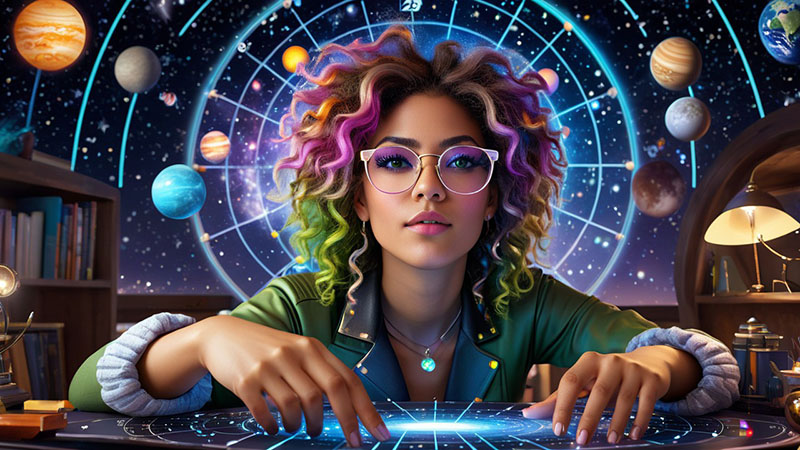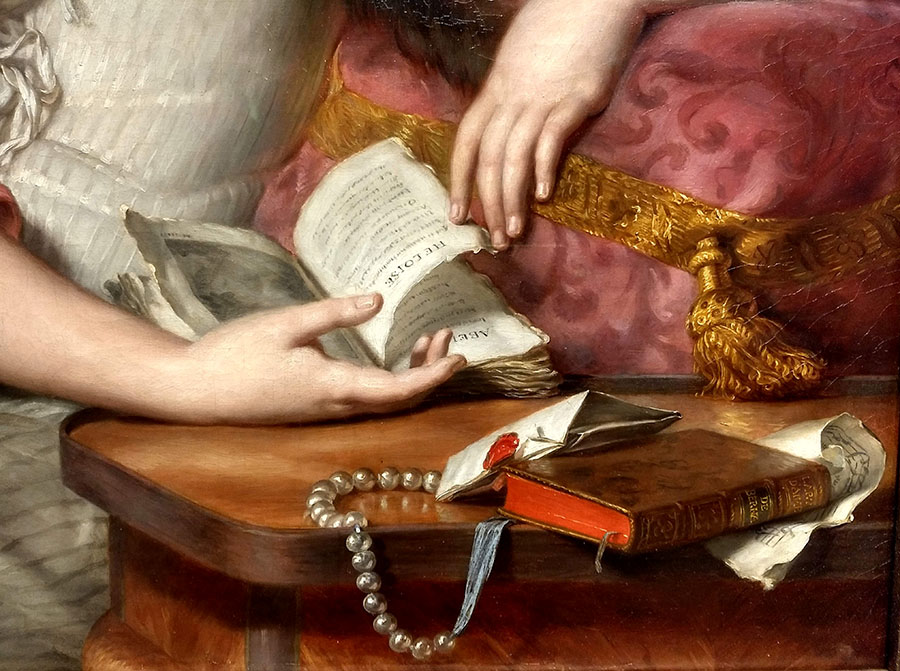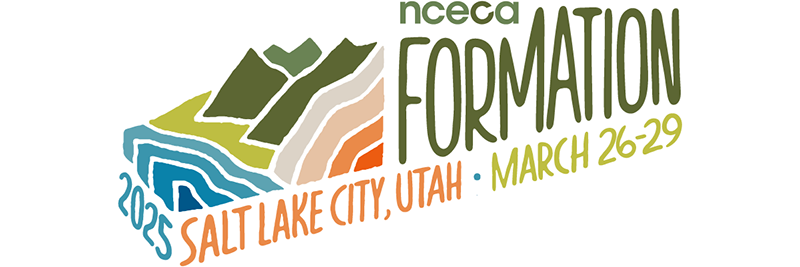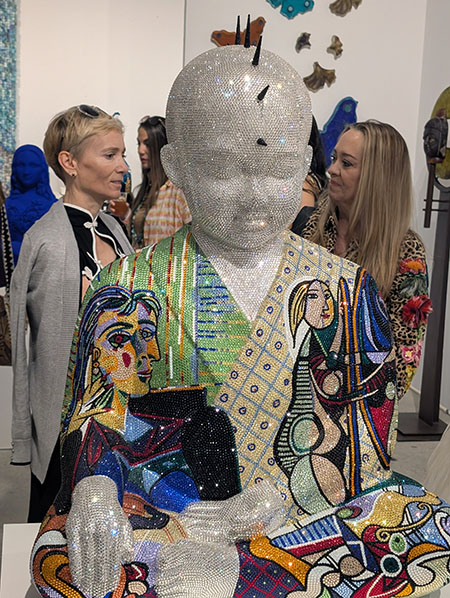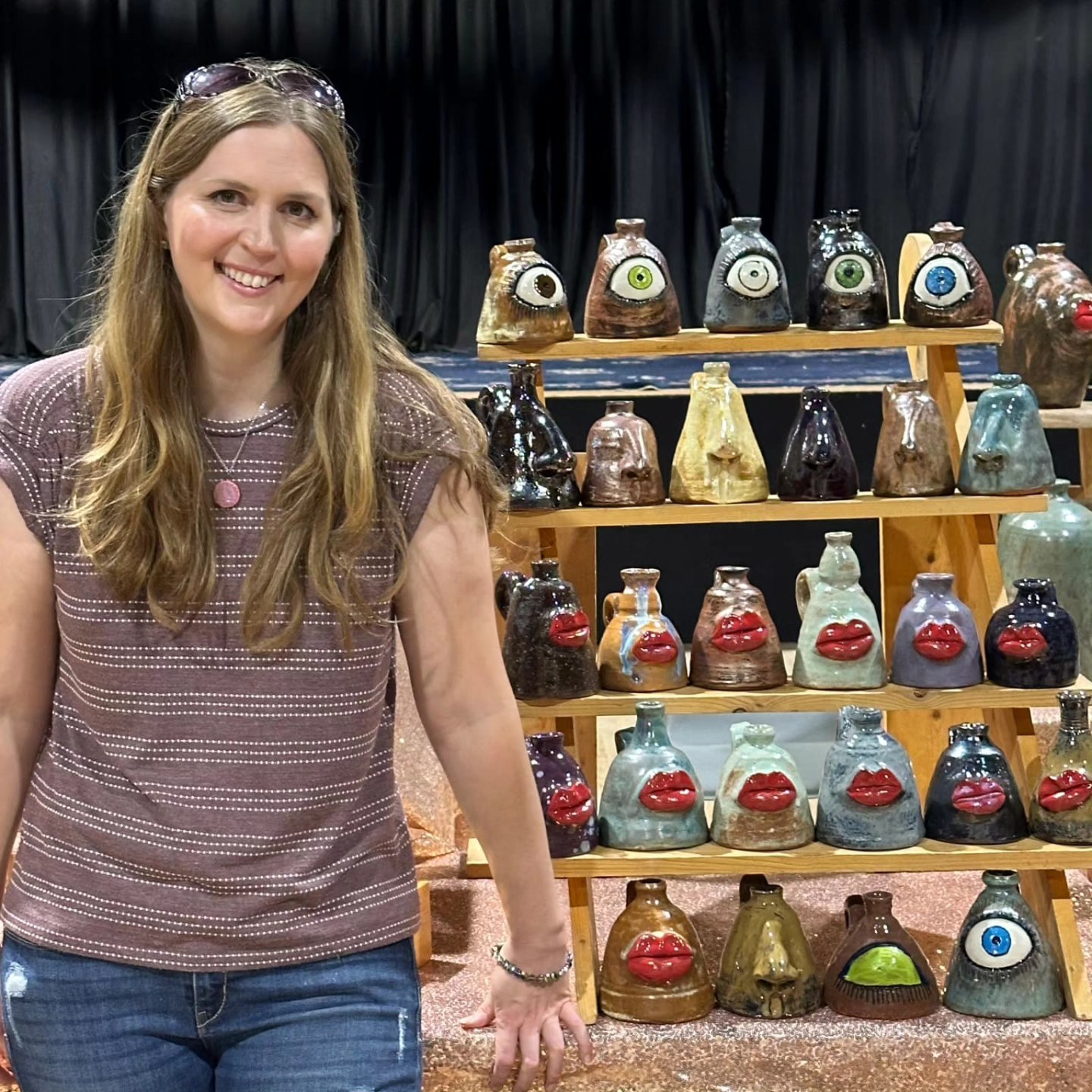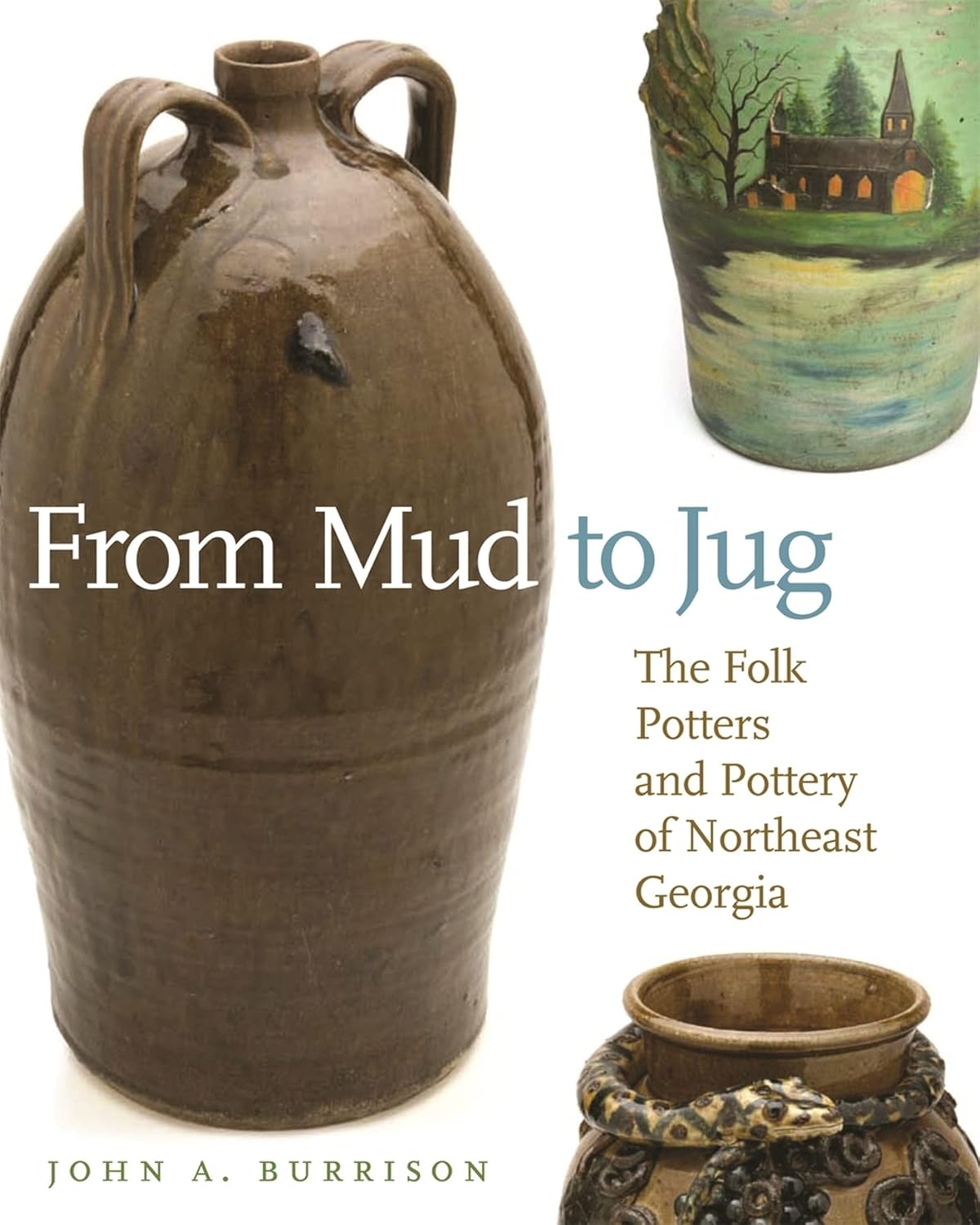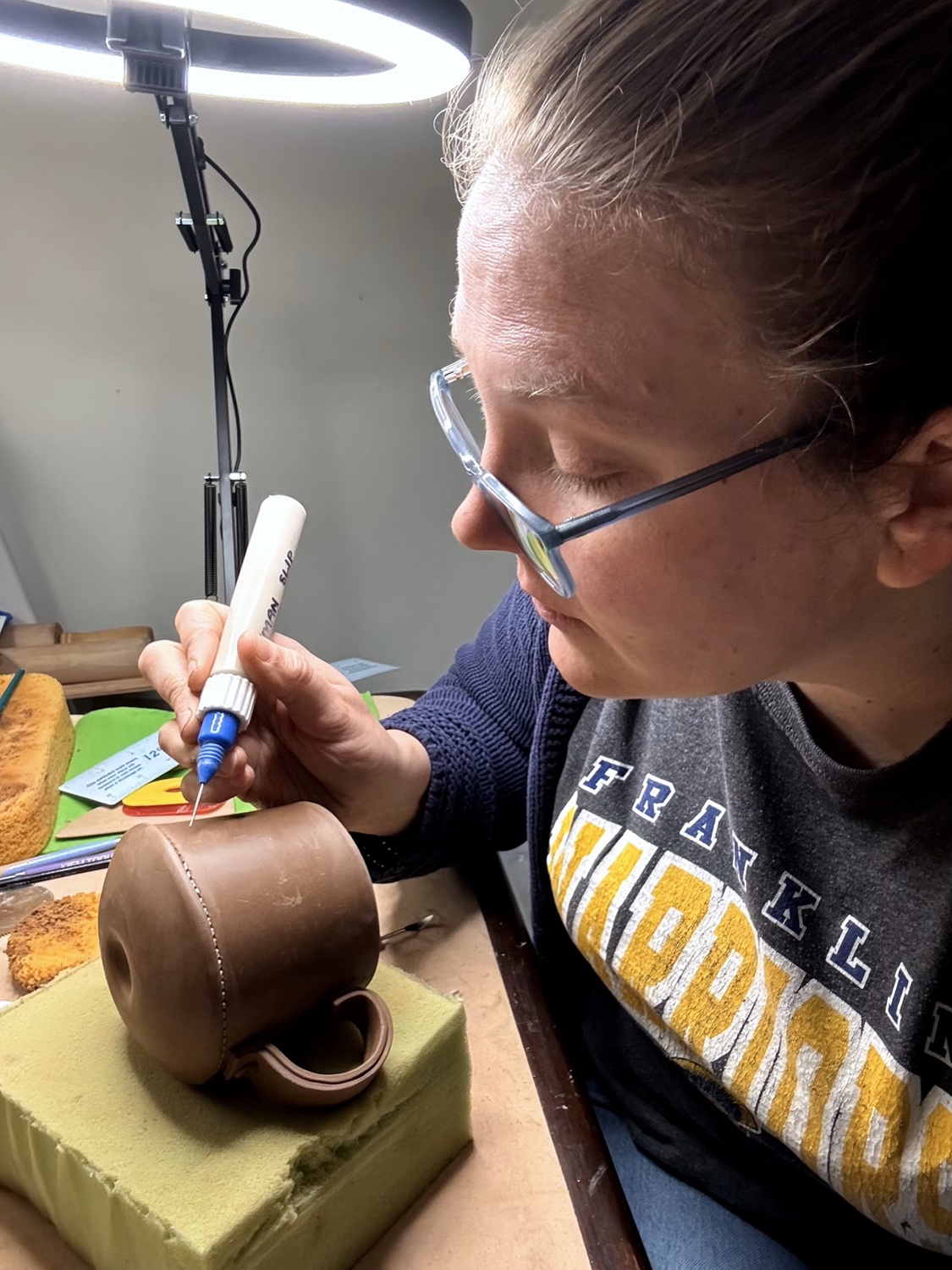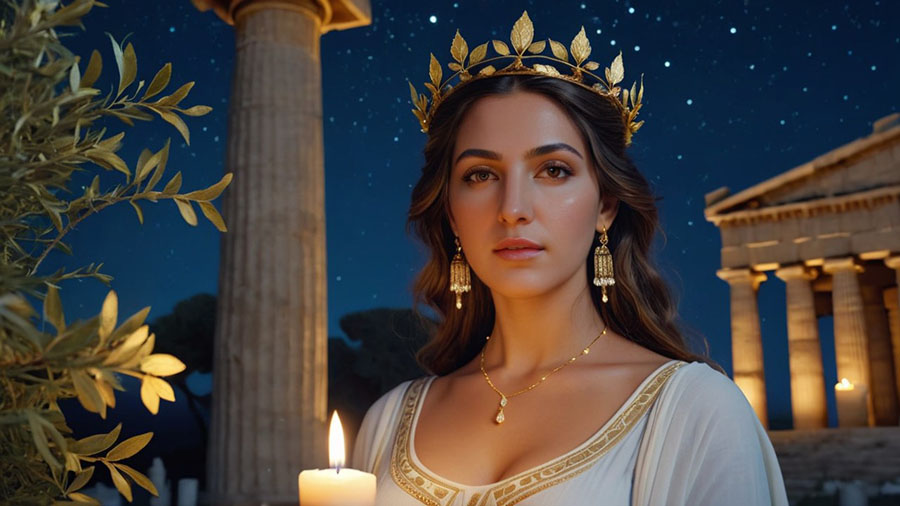
I don’t know about you, but I find the subject of AI image generation fascinating. It’s a new realm of technological advancements, creativity, and ethical issues that many artists grapple with today. AI Art Generators like Midjourney, Stable Diffusion, Deep Dream Generator, and Dall-E 2 are popular tools, allowing users to create stunning images from simple text prompts. Although I’m not a scientist or software engineer, I’m interested in learning about this groundbreaking technology of AI image generation.
There is a growing concern about the use of AI. Joe Rogan often expresses his fear of humanity being taken over by the machines. As AI art becomes more sophisticated, there are serious concerns about copyright infringement, the potential for misuse, and the impact on us, real artists. While these are valid concerns, I think this topic is more nuanced and each question might have a different solution.

Advantages of using AI art generators:
As a creator myself, I think that the AI image generation has several unique advantages that are not obvious. First of all, it’s a great tool to explore your creativity. Just like by looking at original art, you may feel inspired and hopeful by looking at generated images. There is quick satisfaction from the image generation process as you type in a text and see the immediate result on the screen with your participation. Therefore, AI image generation can offer instant psychological help when needed. I often render images when I feel down and need positive energy. To create art, you must dedicate considerable time to learning the skill, while AI image generation takes a few seconds to give instant results. Try DeepDream generator or other service to create stunning AI images and video.
Other obvious advantages include the low cost of image creation for small businesses, increased productivity for creators and video editors, a tool for the movie creation process, and a new income stream for companies selling generative AI models. Overall, it’s an exciting evolution in human development!

I believe that Ai won’t replace us, humans and artists in terms of creativity, emotions, and intelligence. The reason is simple. We have a Divine Spark of the Creator or Higher Consciousness inside us that the algorithms and machines don’t possess. Is it possible to program emotions into the AI model to make it feel joy, excitement or suffering? Is it possible for AI models develop attachment, sense of meaning and time, or feelings of passion or loss? Can it become self-aware? Even if a complete awareness is possible for it, will AI models search for their true meaning or experience a crisis like a human being? It could probably learn to see the beautiful but unable to appreciate the miracle of life. What’s real is the legitimate fear of misuse and biased training of the AI-generative models.
Drawbacks:
I understand that many artists are frustrated with the use of AI art. It’s already tough to make a living doing art and this AI art generation idea feels like an assault on our creativity and job security. Sometimes, I get angry comments about my rare use of AI-generated images in videos to illustrate concepts. Other times, artists lash out at other artists who use AI to create digital art.
Besides legitimate ethical concerns about copyright infringement of original art taken without the artist’s permission to train the models, artists lose some freelance jobs that usually help us offset studio costs. For example, many writers self-publish today and don’t need to hire an artist for their book and cover illustration anymore. Music album covers, posters, and marketing materials can be done with the AI image generators, leaving real artists scraping by or searching for other paying gigs. Freelance photographers may be undercut doing product photography gigs as these images can be rendered. It takes many years to master the artistic skill, yet it passes by as a shiny object of AI image generation.
Also, AI image generators need a constant stream of new, quality data to create better imagery. Therefore, original art gets scrapped from all major social media platforms and image databases without the artist’s permission. Artists are not paid to “give” their images as we normally see in licensing agreements, yet these AI companies generate revenue by selling their services to us. I think this issue would be resolved legally at some point.
Finally, as humans program the models, we can see social biases in the generated images. Remember, the first images generated by Google’s AI? These were black Nazies, popes, Vikings, and the Founding Fathers!

Brief History
Deep learning and artificial intelligence (AI) imaging have evolved significantly since their inception. The origins of AI trace back to the mid-20th century, when Alan Turing’s 1950 paper, Computing Machinery and Intelligence, laid the foundation for machine learning concepts. In the 1950s and 1960s, pioneers like Marvin Minsky and John McCarthy developed early AI models, and coined the term “artificial intelligence” during the 1956 Dartmouth Workshop. Deep learning, a subset of AI, gained traction in the 1980s with Geoffrey Hinton’s revolutionary backpropagation algorithm, which allowed neural networks to adjust their weights through feedback. Hinton, along with Yann LeCun and Yoshua Bengio, is often regarded as one of the “godfathers of AI” for his contributions to deep learning. The modern renaissance of AI imaging began in the 2010s, fueled by advances in deep neural networks and datasets like ImageNet, developed by Fei-Fei Li, which enabled machines to surpass human capabilities in image recognition by 2015.
Deep learning’s impact on AI imaging has been transformative, enabling innovations across diverse fields such as medicine, biotech, art, and entertainment. Techniques like convolutional neural networks (CNNs), introduced by LeCun in the late 1980s, revolutionized image processing by mimicking how the human brain interprets visual information. Today, tools like GANs (Generative Adversarial Networks), popularized by Ian Goodfellow in 2014, create hyper-realistic AI-generated images. For those delving into the technical depths of these advancements, resources like course notes provide invaluable insights into the concepts and methodologies that drive this ever-evolving field. As AI imaging continues to evolve, it remains a testament to decades of innovation, collaboration, and curiosity in the pursuit of intelligent machines.
The process of AI image generation
AI image generation is a complex process. It involves training the Model and then using Image Generation.
To train the Model, companies collect a massive dataset of quality images and their corresponding text descriptions. Feature learning involves the AI model analyzing the images and text descriptions to learn patterns, styles, and relationships between visual and textual elements. The model training consists of deep learning, specifically using neural networks. This training process involves adjusting the model’s parameters to minimize the difference between its generated images and the real images in the dataset. The model needs a constant stream of quality data.
To generate the Image, the user enters a text prompt or description and the AI creates the visual result. It’s fascinating to learn that the AI starts with a random noise image, which is essentially a matrix of random numbers, in other words, layered mathematical matrices. The model iteratively refines the noise image based on the text prompt and its learned knowledge. It adjusts the pixels in the image to match the desired features, styles, and objects described in the prompt. After multiple iterations, the model produces a final image that aligns with the user’s input.
Types of AI image-generation techniques:
- Generative Adversarial Networks (GANs): This technique involves two neural networks, a generator and a discriminator. The generator creates images, while the discriminator evaluates their realism. This competition between the two networks leads to the generation of increasingly realistic images.
- Diffusion Models: These models start with a noisy image and gradually remove the noise to reveal the underlying image structure, guided by the text prompt.
- Transformer-Based Models: These models, inspired by natural language processing, are tools for understanding the relationships between text and image.
The simplified process of AI image generation:
1. Text Encoding: The text prompt is broken down into smaller units, or tokens. Each token is mapped to a numerical representation (embedding), capturing its semantic meaning.
2. Image Encoding: The AI model analyzes a vast dataset of images to learn visual features like shapes, colors, and textures. These features are compressed into a latent space, a mathematical representation of the image’s essence.
3. Text-to-Image Translation: Text embedding guides the generation process, directing the model to create an image that aligns with the prompt’s meaning. The model iteratively refines the image, starting from a random noise image and gradually shaping it into the desired output.
4. Image Generation: The latent space representation is decoded into a pixel-level image. Techniques like super-resolution and noise reduction may be applied to enhance the final image quality.
The Mathematical Underpinnings:
AI image generation relies on:
- Matrix Operations: To manipulate and process the numerical representations of images and text.
- Gradient Descent: To optimize the model’s parameters and minimize the difference between the generated image and the desired output.
- Probability Distributions: To model the uncertainty in the image generation process.
- Loss Functions: To measure the discrepancy between the generated image and the ground truth.

Elevate your creativity with the AI inspiration app to create photo portraits like a pro
GenYOU was created by the team at Generated Media using cutting-edge AI and a custom-trained model designed specifically for identity preservation. The team spent countless hours developing and fine-tuning the model to ensure that every generated image captures not just your face but your entire essence—your features, expressions, and overall appearance.
We created GenYOU because most AI generators struggle to recreate the same person across multiple images accurately. Their results often feel random, inconsistent, or overly artificial. We wanted to change that by offering an app that delivers authentic, high-quality AI portraits where you are always the focal point.
Unlike simple apps that just swap faces or apply filters, GenYOU brings your identity to shine across various styles, outfits, and settings. Whether you’re experimenting with fashion, creating professional headshots, or stepping into a fantasy world, GenYOU produces stunningly realistic images that feel personal, lifelike, and unmistakably you.
4 advantages of using AI-Generated Photography like GenYOU
Traditional photography requires expertise, time, and expensive equipment. GenYOU simplifies this process, leveraging AI to create seamless, high-resolution portraits tailored to different purposes, including business, gaming, and social media.
1. Flawless Identity Preservation
One of the biggest challenges in AI-generated photography is maintaining an individual’s facial consistency. GenYOU’s advanced AI ensures natural symmetry and accurate facial replication, avoiding common distortions found in other AI tools.
2. A Plethora of Image Styles
GenYOU offers extensive customization options, allowing users to create business and corporate headshots, social media profile pictures, cinematic and editorial-style portraits, personalized avatars for gaming and digital identity and promotional images for e-commerce and marketing. For those seeking to design unique characters, GenYOU doubles as a robust character generator, enabling users to craft highly detailed and customizable digital personas.
3. Unmatched AI Precision for Realistic Pictures
Unlike many AI tools that produce artificial-looking images, GenYOU uses advanced deep-learning algorithms to refine details like contrast, lighting, and texture, to create realistic images. Unlike tools that over-edit or distort features, GenYOU prioritizes natural appearance.
4. Cost-Effective Alternative to Traditional Photography
Gone are the days of expensive professional photoshoots. With GenYOU, users can create studio-quality images at low cost in minutes. By merging efficiency, accuracy, and creative flexibility, it provides an ideal solution for a broad range of users.
How it works:
- Install GenYOU – Get the app and start generating AI-powered photos.
- Upload 4 selfies to create your AI model – The AI captures your unique look for precise results.
- Pick a template or customize your style – Choose from a variety of available designs or enter your idea.
- Receive stunning, lifelike images of yourself – Get high-resolution photos that truly reflect you.
- Know that the free version of the app is limited, the AI-generated model of you is shared with the community on a free plan, and you must sign in using a Google account.
What does latent space look like?
A latent space is a high-dimensional mathematical space where data, such as images or text, is represented in a compressed form. It’s a bit like a hidden world where similar data points are clustered together. It’s difficult to visualize this latent space. However, techniques like t-SNE (t-distributed Stochastic Neighbor Embedding) and UMAP (Uniform Manifold Approximation and Projection) can reduce the dimensionality of the space into 2D or 3D representations. These visualizations can provide insights into the structure of the latent space and how different data points relate to each other.
A simplified visual analogy of the latent space can be a city map. Each point on the map represents a specific location. The map itself is a 2D representation of a 3D space (the city). Similarly, a latent space is a multidimensional representation of data, where each point corresponds to a specific data point (e.g., an image or a text document).
As a result, latent spaces often have many dimensions. Data is compressed into a lower-dimensional space, capturing the essential features. Similar data points are clustered together in the latent space, reflecting their semantic similarity. By manipulating points in the latent space, the model can generate new data points – images, and text. While we cannot directly “see” this hidden, latent space, understanding how it works is crucial for developing advanced AI models.
https://www.ai.codersarts.com/multivariate-analysis
Neural networks & deep learning

Neural Networks
A neural network is a computing system inspired by the biological neural network of the human brain. It consists of interconnected nodes, or neurons, organized into layers. These layers process information in a sequential manner, from input to output.
How Neural Networks work:
- The input layer receives data.
- The input data passes through the hidden layers, where each neuron applies a weighted sum of its inputs and activates if the result exceeds a threshold. This is called propagation.
- The final layer produces the output, which can be a classification, a regression value, or another type of prediction.
- Backpropagation is a learning algorithm that adjusts the weights and biases of the network to minimize the error between the predicted output and the actual output.
Deep Learning
Deep learning is a subset of machine learning that uses artificial neural networks with multiple layers to learn complex patterns from large datasets. The “deep” in deep learning refers to the multiple layers of neurons in the network. In essence, deep learning leverages the power of neural networks with multiple layers to tackle complex problems that were previously difficult to solve.
How Deep Learning works:
- Deep learning models learn features at multiple levels of abstraction which constitutes hierarchical learning.
- The models automatically learn relevant features from the data without explicit feature engineering (feature learning).
- Deep learning models can learn end-to-end mappings from raw input to output.
How Deep Learning is used:
- Image and Video Recognition: Object detection, image classification, and video analysis.
- Natural Language Processing: Language translation, sentiment analysis, and text generation.
- Speech Recognition: Speech-to-text conversion and voice assistants.
- Autonomous Vehicles: Self-driving cars and drones. Deep learning enables autonomous vehicles, such as drones and self-driving cars, to navigate complex environments and make real-time decisions.
- Robotics: Deep learning can be used to develop robots capable of performing tasks in dangerous or inaccessible environments, such as bomb disposal or search and rescue operations.
- Military & Security applications: Image and video analysis, signal intelligence, and cybersecurity. Deep learning algorithms can analyze vast amounts of satellite imagery, drone footage, and other visual data to identify patterns, anomalies, and potential threats. Deep learning can be used to analyze intercepted communications, such as phone calls, emails, and social media posts, to extract valuable intelligence. Deep learning can detect and respond to cyber threats, such as malware attacks and data breaches, by analyzing network traffic and identifying malicious patterns.
- Predictive Maintenance: Deep learning can predict equipment failures, allowing for proactive maintenance and reducing downtime. Deep learning can optimize supply chains by predicting demand, reducing waste, and improving efficiency.
- Training and Simulation: Deep learning can create highly realistic, individualized simulations for training soldiers and pilots.
- Surveillance and Security: Deep learning can do facial recognition to identify individuals in real time, enabling law enforcement to track suspects and monitor public spaces. It can also detect objects of interest in surveillance footage, such as weapons or suspicious behavior.
Core Technical Skills:
If you are interested in getting a job in this field, these are some of the requirements. A deep understanding of machine learning concepts, including supervised and unsupervised learning, neural networks, and deep learning. Proficiency in deep learning frameworks like TensorFlow or PyTorch to build and train complex neural networks. Strong programming skills in Python, as it’s the primary language used in machine learning and AI. A solid grasp of linear algebra and calculus is essential for understanding the underlying principles of neural networks and optimization algorithms. Also, knowledge of data cleaning, preprocessing, and analysis techniques is crucial for preparing datasets for training. Plus,
Specialized Skills:
- Generative Models: Familiarity with generative models like GANs, VAEs, and diffusion models, and their applications in image and text generation.
- Latent Space Manipulation: Understanding how to navigate and manipulate latent spaces to generate new data, interpolate between existing data points, and control the style and content of generated outputs.
- Computer Vision: Knowledge of computer vision techniques for image processing, feature extraction, and object recognition.
- Natural Language Processing (NLP): For text-to-image generation, a strong foundation in NLP is necessary to understand and process text prompts.
Updating the Model with datasets:
AI image generation models require regular updates with new, quality data to improve their performance and generate more diverse and realistic images. These updates can involve adding new images and text descriptions to the model’s training data that can help it learn new styles, concepts, and techniques. It also improves the diversity of image generation capabilities. Regular updates lead to better image quality, style, faster image generation, coherence, and accuracy.
What Happens Without Updates?
If an AI image generation model doesn’t receive regular updates, it may experience stagnation of image generation. Image quality declines and the model becomes biased towards the original dataset it was trained on.
Publicly Available Datasets include:
- ImageNet: A large database of images organized according to a hierarchical taxonomy.
- COCO (Common Objects in Context): A dataset containing images with object annotations and scene captions.
- LAION-5B: A massive dataset of images and text descriptions scraped from the internet.
User-generated content includes social media platforms and online forums like Instagram, X, Reddit, 4chan, etc. Proprietary Datasets include companies’ private datasets that they use for AIgenerative training.
In this podcast episode about the AI model named ‘Claude’, Lex Fridman interviews Dario Amodei, the CEO of Anthropic, a public benefit corporation dedicated to building AI systems. They discuss the fast-paced development of AI systems, datasets, ethics, model training, etc. Amodei earned his doctorate in biophysics from Princeton University as a Hertz Fellow and was a postdoctoral scholar at the Stanford University School of Medicine. He was a VP of Research at OpenAI and worked at Google Brain as a Senior Research Scientist.
In his essay, Machines of Loving Grace, Amodei sees great potential in the development of AI systems, especially in biology. He predicts that AI-enabled biology and medicine will compress the progress of 100 years into 5-10 years! In his essay, Amodei discusses a lot of different applications for AI models to help people live up to 150 years. Can he do it?
Who invented the AI image generation?
While many researchers and engineers have contributed to the development of AI image generation techniques, Ian Goodfellow seems to be the first figure who made a significant breakthrough in the development of Generative Adversarial Networks (GANs) in 2014. GANs revolutionized AI image generation by enabling the creation of highly realistic and diverse images.
Who invented facial recognition?
The pioneers of facial recognition technology were Woody Bledsoe, Helen Chan Wolf, and Charles Bisson. They began their groundbreaking work in the 1960s, focusing on teaching computers to recognize human faces.
Their early experiments involved manually marking facial features on photographs and feeding this data into a computer. While the technology was primitive by today’s standards, it laid the foundation for the advanced facial recognition systems we have today.
I found this fascinating episode about the early history of facial recognition technology. Karthik Cannon co-founded a facial recognition and computer vision startup called Envision. They make AI software with glasses for visually impaired people. The glasses read text, recognize objects, and do voice descriptions of the surroundings. He also has programmed the glasses to recognize and describe human faces! This project has built on the research of Woody Bledsoe, an obscure mathematician and computer scientist living in 1960s America, who did a lot of mathematical research about facial recognition.
While his body was ravaged by ALS and he couldn’t speak, Woody left his research papers in the garage for his son to discover. He left tons of images of people’s faces marked with math equations. Also, thousands of photos of marked-up, rotating faces he studied while he worked at the University of Texas. Woody had worked in a start-up in Palo Alto before his university career began, where he and his friends explored crazy ideas, among them pattern recognition. To sustain his company financially, Woody got support from CIA companies to work on facial recognition research over the years. The podcast episode discusses the complex facial recognition process Woody went through. When his company went out of business, he received a project to work on facial recognition for law enforcement, matching mug shots with potential criminals utilizing computer software that cut on time 100-fold!
Because of the CIA’s sponsorship of his company & research, Woody couldn’t publish any of his findings to make them public. As a result, it fell into obscurity for decades before interest in this subject re-emerged.

How much power does it take to generate one image?
The amount of energy required to generate a single AI image can vary significantly depending on several factors, including:
- More complex models, like Stable Diffusion XL, consume more energy than simpler ones.
- Higher-resolution images require more computational power and energy.
- The number of iterations the model goes through to refine the image affects energy consumption.
- The efficiency of the hardware and software used can impact energy usage.
Generally, a single AI image can consume anywhere from 0.01 to 0.29 kilowatt-hours (kWh) of energy. Because of energy use, big techs like Amazon and Microsoft are exploring new options for building or reopening nuclear plants to support their AI systems.
What computers are used for AI image generation?
AI image generation is typically performed on computers with powerful graphics processing units (GPUs). These processors handle complex mathematical calculations and parallel processing. Common computers used for AI image generation include High-Performance Computing (HPC) Systems. These are large-scale systems with multiple servers often used by research institutions and big tech to train and run complex AI models. High-end gaming PCs with GPUs can be used for AI image generation for small projects and personal use. Popular GPUs for AI image generation include NVIDIA’s RTX series. Cloud computing platforms like Google Cloud, Amazon Web Services (AWS), and Microsoft Azure provide access to powerful computing resources, including GPUs. This allows users to rent computing power on demand.
Similarities and Differences in Logical Processes Between AI and Humans in Image Generation
While AI image generation has made significant strides, its underlying logic differs from human creativity in several ways.
Similarities:
1. Both AI and humans excel at recognizing patterns. AI models are trained on vast datasets of images, allowing them to identify recurring patterns like shapes, colors, and textures. Humans, too, learn to recognize patterns from their experiences and observations.
2. Both AI and humans learn from experience. AI models improve their image generation capabilities by training on more data and refining their algorithms. Similarly, human artists learn from their mistakes, experiment with different techniques, and refine their skills over time.
Differences:
1. AI relies heavily on data to learn patterns and generate images. It lacks a deep understanding of the world and often struggles with abstract concepts. Humans can generate images based on abstract concepts, emotions, and imagination, even without specific visual references.
2. AI struggles with understanding context and nuance in prompts. It may generate images that are technically correct but lack the emotional depth that a human artist can convey. People can interpret prompts with subtle sensitivity, considering culture, and history but most importantly, personal experiences and emotions that are channeled through original art.
3. While AI can generate creative and innovative images, its creativity is limited by the quality of data it’s trained on. Artists are unique and can think outside the box and feel and process their emotions to generate original art.

How does this technology generate revenue for companies?
- Companies sell AI-generated art to consumers as art prints or digital downloads.
- Companies can license AI-generated art to other businesses for use in advertising, marketing materials, or product design.
- Companies can offer AI art generation services to clients, charging fees for creating custom images based on specific prompts.
- Many companies develop and sell software tools that allow users to create their AI-generated art. Other companies, incorporate AI image generation into their final product.
- Companies integrate AI Art into other products they offer, like video games, virtual reality, and design software.
- Companies also collect data from user interactions with AI art tools, which can be used to improve the technology and generate insights for future products and services.
Potential future applications of AI-generated images for companies to make money:
- While content creation and marketing might become dominated by AI-driven art to cut costs and raise efficiency, human creativity, and emotional and thought processes can’t be replaced with AI. Thus, I believe that humans will always be in charge of originality but have AI models as a tool to speed up the creative process and deliver results.
- AI can generate high-quality product images, reducing the need for expensive photo shoots. Some products we see in magazines and ads feature extreme close-ups. These are often 3D renders, not real pictures, like images of diamonds, watches, jewelry, etc. AI might generate similar images much faster being cost-efficient.
- AI image generation will be used in game development and virtual reality experiences.
- Product visualization is a natural extension of the online shopping experience.
- AI can generate initial design concepts in architecture and design projects. AI can create realistic visualizations of interior design concepts, helping people visualize space.
- AI can generate realistic simulations for training purposes, improving safety and efficiency.
In conclusion:
I think humanity will benefit greatly from AI systems, just like from having computers or automation. While AI can generate creative and innovative images, its creativity is limited by the dataset quality it’s trained on. Artists are unique and can think outside the box and feel and process their emotions to CREATE original art. Art is always based on layers of personal experiences and feelings that the machines don’t possess. Also, artists create tangible art while AI pictures exist in digital format that can be printed, of course, but AI art lacks the physicality of paint or other art materials used in the art creation process. We’ve already seen plenty of bad movies, probably based on AI writing ( the 2nd season of Locki, the latest Marvel movies, endless series on Netflix and Amazon that lack originality, etc).
We won’t see the birth of innovative artists inside the AI models because only our reality can give rise to such creative people. True innovators like the facial recognition trailblazer, and mathematician Woody Bledsoe were way ahead of their time but paved the way to a better future. And while all innovative applications can be used for good and bad, I hope AI tech will end up in good hands, letting societies flourish.
- Tech parts of this article were written with the help of Gemini.

